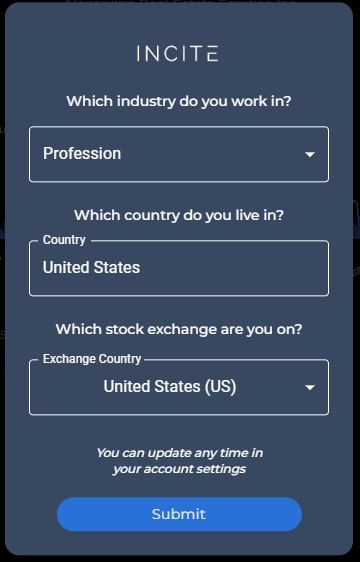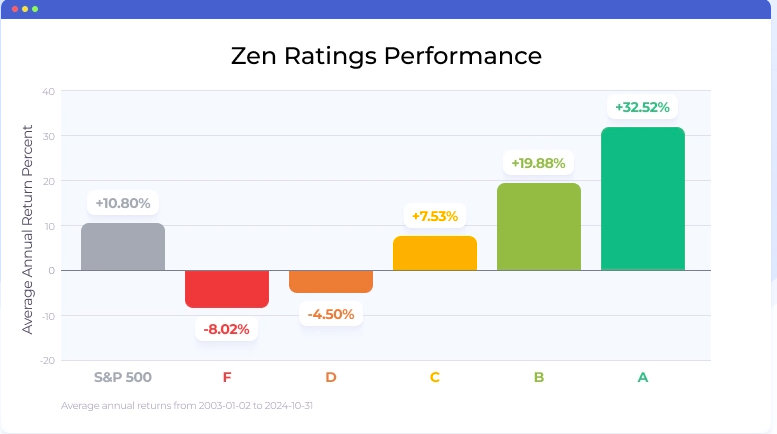Top 10 Tips On Assessing The Market Coverage For Ai Stock Predicting/Analyzing Trading Platforms
Market coverage plays an important aspect in evaluating an AI platforms for analyzing and predicting stocks which affects the access you have to a broad array of financial markets. A platform that has extensive market coverage allows you to diversify your portfolio, explore global opportunities, and adapt to different trading strategies. Here are the top ten ways to determine the market coverage of these platforms.
1. Evaluate Supported Asset Classes
Stocks: Ensure that the platform includes stocks from the top stock exchanges, which include NYSE, NASDAQ and LSE.
ETFs: Make sure that the platform offers an array of ETFs to give you a variety of exposure to different sectors, themes and even regions.
Futures and options. Verify that the platform has derivatives such as options, futures and other instruments that leverage.
Forex and commodities: See whether your website offers Forex and commodities, precious metals and energy commodities.
Cryptocurrencies: Check to see if your platform supports the major cryptocurrencies like Bitcoin, Ethereum and altcoins.
2. Check geographic coverage
Global markets: Ensure the platform is able to cover major global markets, including North America, Europe, Asia-Pacific and emerging markets.
Regional focus: Find out whether the platform is specialized in certain regions or markets that align with your business interests.
Local exchanges - Examine to find out if there are local or regional exchanges which are relevant to your area and strategy.
3. Delayed Data Vs. Delayed Data
Real-time data - Ensure that the platform provides live market data that can aid you in making quick decisions, particularly for traders who are active.
Delayed data: Discover whether you are able to get delayed data for free or at a lower cost. This may be enough for long-term investors.
Data latency: Check whether the platform is able to reduce latency in real-time feeds of data especially in high-frequency trading.
4. Evaluation of Historical Data
Depth of historic data Check that the platform offers extensive data (e.g. more than 10 years old) to test backtesting.
Granularity: Determine if the historical data includes intraday granularity, as well with weekly, daily and monthly.
Corporate actions: Check if historical data accounts for stock splits, dividends, as well as other corporate actions.
5. Check the market depth and order book data
To get a better price, ensure that the platform is equipped with Level 2 data.
Be sure to check for live bidding and asking spreads. This will guarantee that the pricing is correct.
Volume data: Check if the platform has specific volume data to analyze liquidity and market activity.
6. Examine the coverage of Indices Sectors
Major indices - Ensure your platform is compatible with major indices like the S&P 500 (e.g. NASDAQ 100 or FTSE 100), for benchmarking based on indexes.
Data from specific sectors to perform a targeted analysis, you should check whether the platform includes data from specific industries (e.g. health care, technology, etc.).
Custom indices. Determine if your platform allows you to create and monitor custom indexes based on the criteria that you specify.
7. Evaluate integration with News and Sentiment
News feeds: Make sure that the platform incorporates live feeds of news from reputable sources, such as Bloomberg and Reuters in the case of market-moving events.
Sentiment analysis: See if the platform includes tools for analyzing sentiment based on news media, social media, or other data sources.
Event-driven strategy: Check that the platform supports event driven trading strategies (e.g. announcements of earnings economic reports, announcements of earnings).
8. Check for Multimarket Trading Abilities
Cross-market trade: Check that the platform permits trading across different markets and asset categories from a common interface.
Conversion of currency: Make sure your platform supports multi-currency trading and automatic currency conversion.
Support for time zones: Check that your platform supports the ability to trade in different time zones.
9. Check the coverage of other data sources
Alternative data - Examine for alternative data sources that are integrated into the platform (e.g. web traffic, satellite imagery, or transactions with credit cards). This will provide you unique insight.
ESG data. Check if the platform is stocked with environmental, socio-economic, and governance data to support socially accountable investing.
Macroeconomic data: Make sure the platform has macroeconomic indicators to conduct fundamental analysis (e.g. GDP, inflation rates, interest rates).
Review Feedback from Customers and Market Reputation
User feedback is a great way to evaluate the market reach of a platform.
Reputation in the industry: Find out if the platform is recognized as a market leader by experts in the industry or awards.
Case studies: Check for case studies, testimonials, and other information that highlights the platform's effectiveness on specific markets or asset categories.
Bonus Tips
Trial period: Take advantage of an unpaid trial or demo to evaluate the market coverage and data quality.
API access: Determine if the platform's API allows access to market data programmatically to create custom analysis.
Support for customers. Make sure that the platform provides assistance with regard to market or data inquiries.
With these suggestions using these tips, you will be able to be able to accurately evaluate the coverage of AI stock prediction/analyzing trading platform. You can then choose a trading platform that offers you the markets and necessary information to be successful in your trades. Market coverage is crucial for diversifying portfolios, identifying new opportunities and to adapt to changing market conditions. View the best my website ai trading for blog advice including investing ai, ai investment platform, stock ai, best ai trading app, ai investment app, ai for stock predictions, options ai, ai for investing, best ai trading app, ai for stock trading and more.

Top 10 Tips When Assessing Ai Trading Platforms For Their Flexibility And Trialability
In order to ensure the AI-driven stock trading and prediction platforms meet your needs, you should evaluate their trials and options prior to committing to a long-term contract. Here are the top ten tips to consider these elements.
1. Try it for Free
Tip: Check if the platform gives a no-cost trial period to test its capabilities and performance.
Why: The trial is an excellent opportunity to try the platform and evaluate the benefits without risking any money.
2. Trial Duration and Limitations
Check the length of the trial and any restrictions.
What's the reason? Understanding the limitations of a test will help you determine if an exhaustive assessment is offered.
3. No-Credit-Card Trials
Find trials for free which don't ask for your credit card's number in advance.
What's the reason? It decreases the possibility of unanticipated charges, and it allows you to cancel your subscription.
4. Flexible Subscription Plans
Tip. Check to see if a platform offers an option to subscribe with a variety of plans (e.g. annually or quarterly, monthly).
Why flexible plans let you to select the level of commitment that best suits your needs and budget.
5. Customizable features
Tips: Make sure that the platform you are using has the ability to be customized such as alerts, risk settings and trading strategies.
Why is this: Customization allows the platform to meet your trading goals.
6. It is simple to cancel a reservation
Tip: Determine how simple it is to cancel, upgrade or upgrade your subscription.
What's the reason? In allowing you to unwind without hassle, you can avoid getting stuck in a plan that's not right for you.
7. Money-Back Guarantee
Tips: Look for websites which offer a refund guarantee within a specified time.
The reason: It will give you an additional layer of protection should the platform fail to meet your expectation.
8. Access to all features during Trial
Be sure to check whether you have access to all features included in the trial version, not just a limited edition.
Try the full functionality prior to making a final decision.
9. Customer Support during the Trial
Tips: Assess the quality of customer support available throughout the trial time.
You can maximize your trial experience by getting solid assistance.
10. After-Trial Feedback Mechanism
Tips: See if you can provide feedback to the platform after the test. This will help improve the quality of their services.
Why is that a platform that takes into account the input of users is more likely to grow and meet the user's needs.
Bonus Tip: Scalability Options
If your trading activities increase it is possible to modify your plan or add new features.
If you take the time to consider the options available for trial and flexibility, you can make an informed choice as to whether or not an AI stock prediction trading platform is the best option for your requirements. Read the best more info about ai stock price prediction for more advice including best ai penny stocks, ai stock trader, best ai stock prediction, ai investment tools, best ai stock prediction, ai stock price prediction, chart analysis ai, ai share trading, ai investment tools, ai share trading and more.

Comments on “20 Pro Advice For Picking AI Stock Predictions Platform Sites”